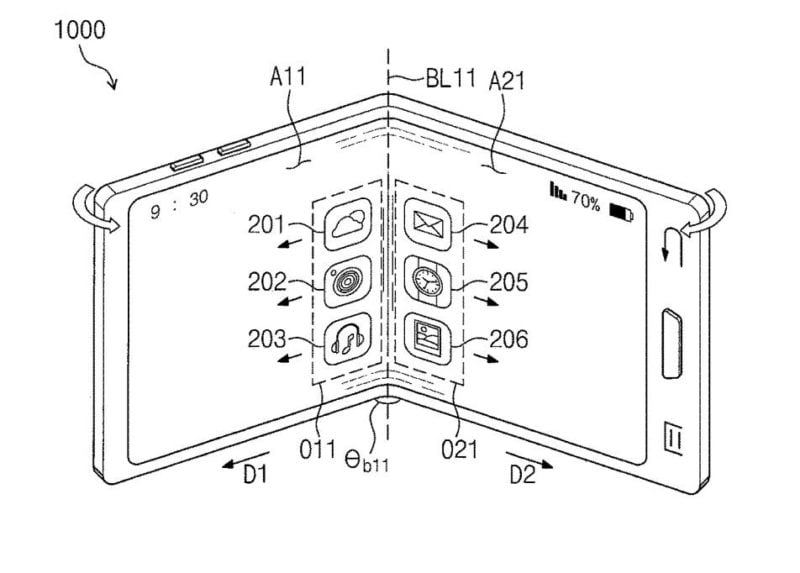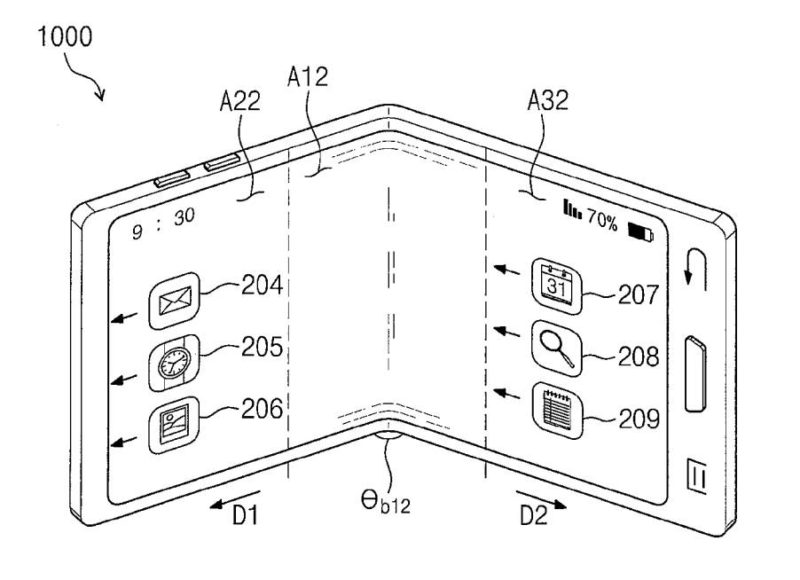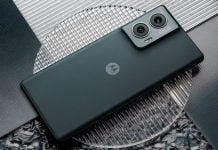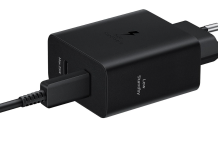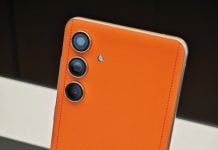Samsung is expected to unveil the Galaxy X foldable phone next year, perhaps at MWC 2019. Ahead of that, the innovative Korean company has received two new patents and one of them is of a foldable phone design differently from the ones that have previously been patented. The folding design patent was filed under patent number US009959030 with the United States Patent and Trademark Office (USPTO). This could as well be what the Galaxy X might look like as the images show a phone that folds horizontally, unlike a previous patent that showed a phone folding in a couple of different ways.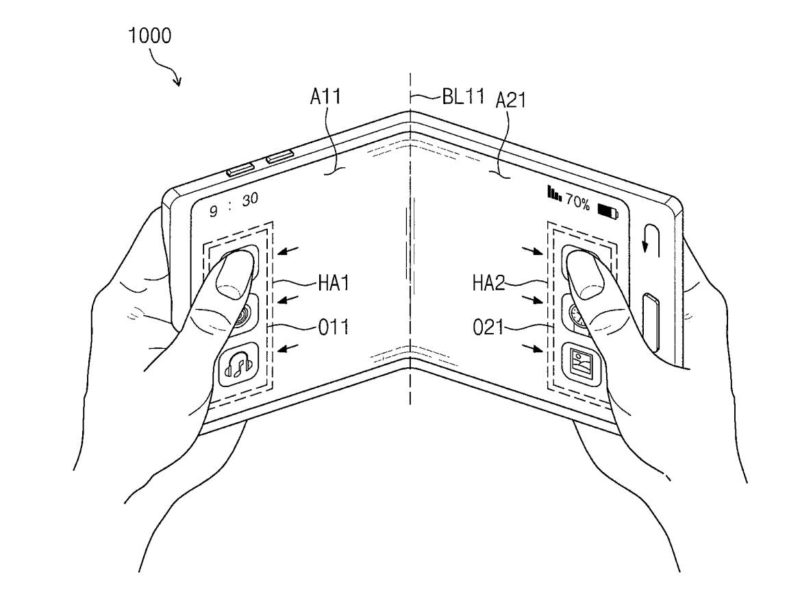
This design shows the possibility of the phone being used in landscape orientation. There is also an additional hinge that would enable the phone to be propped up vertically in portrait mode. When the two sides are closed together, the phone will automatically turn off while opening up the two sides will turn it on. Another thing is that the hinge isn’t like the regular hinge. The phone is equipped with a special hinge that would respond to the touch of a sensor. The patent shows the presence of a special “deformation sensor” and “grip sensors.” The grip sensor seems to be for sensing when and where a user has gripped the smartphone, while the deformation sensor detects when and how a device is being folded.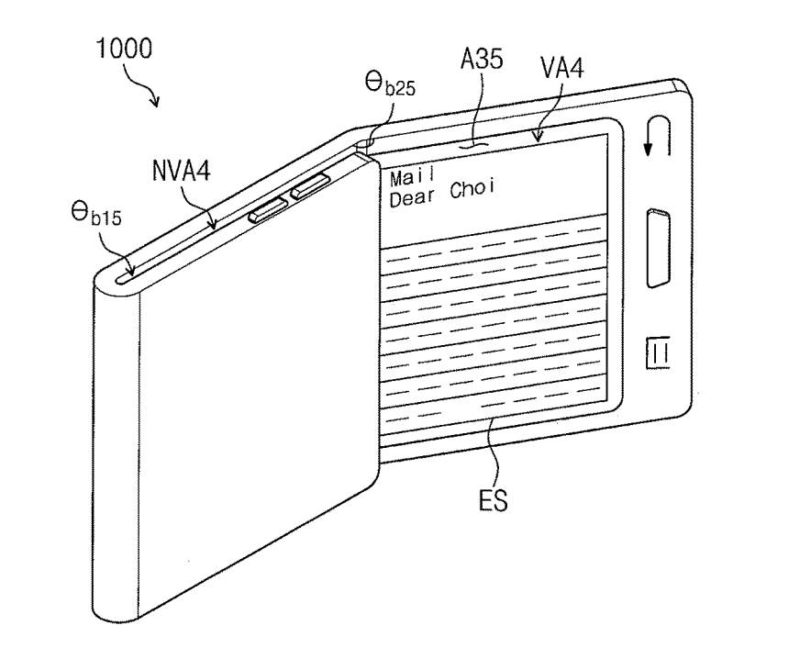
From the drawings, we can gather that the purpose of these is to ensure that the user interface is dynamic. That is, it will move to keep them visible and also accessible when the device is folded and unfolded. That way, the device remains usable with relative ease regardless of how it is held or what the orientation of the screens is. For example, if a user bends the screen to fold the device down, all of the icons shown in the drawings move to the screen on the outside. For a slight bend at the centre, they move to the edges where the user’s hands have been placed.
Read More: Samsung’s Foldable Phone Will Adopt A Note 8 Design But with a Bendable Midpoint
Samsung’s second patent received the same day was for a transparent smartphone screen. The Korean company unveiled a transparent television screen in 2015 but despite its appeal, patronage was poor such that the company had to kill off the product line since the investment wasn’t being justified. So, we wonder how they hope to make this one perform better since the transparent smartphone display will likely be similar although much smaller. There are suggestions the transparent screen could also allow for the use of AR without employing a camera to incorporate the real world background used in the feature. However, we may likely have to wait for a long time before this would be used on a smartphone. That is if ti ever going to be commercialized. You can check out more of the drawings of the foldable design patent from below.
(source)
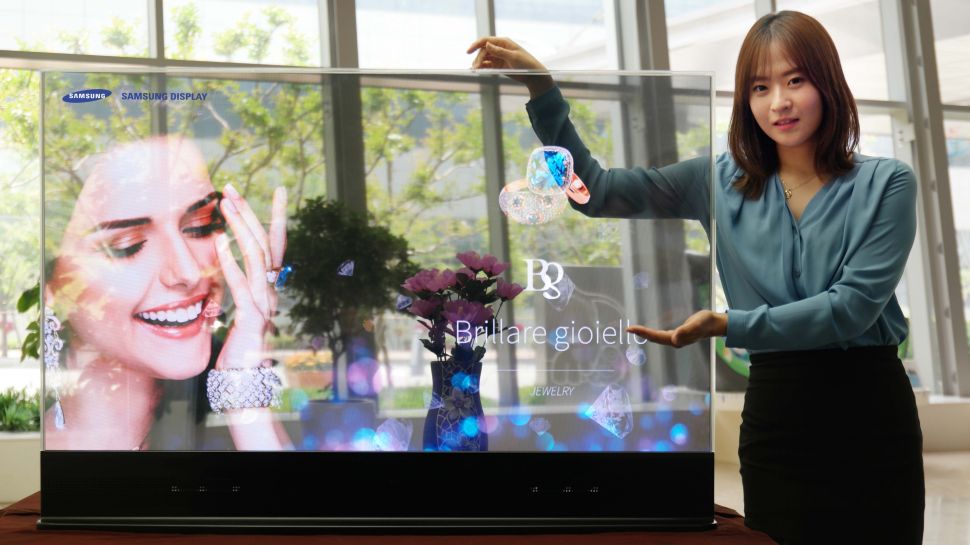
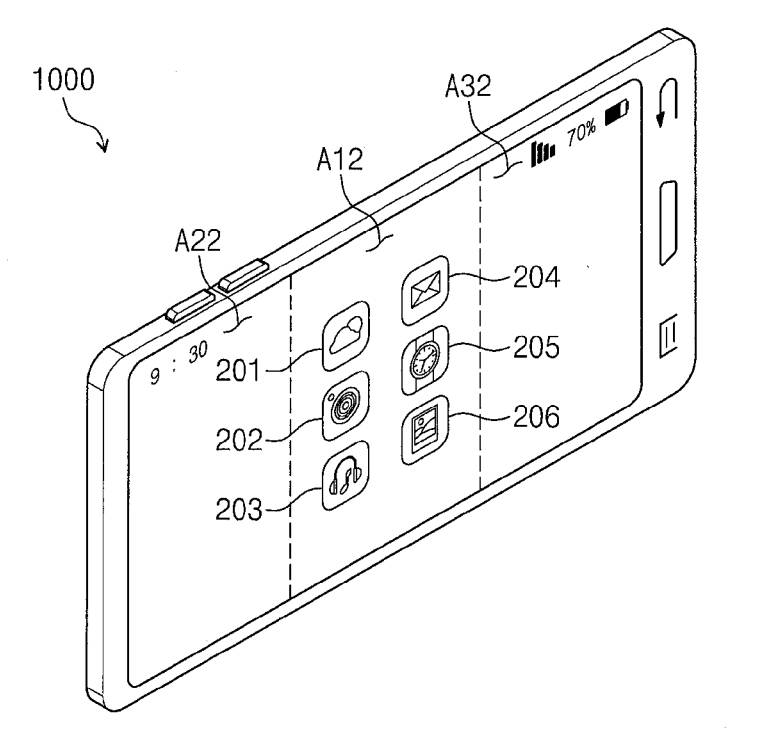
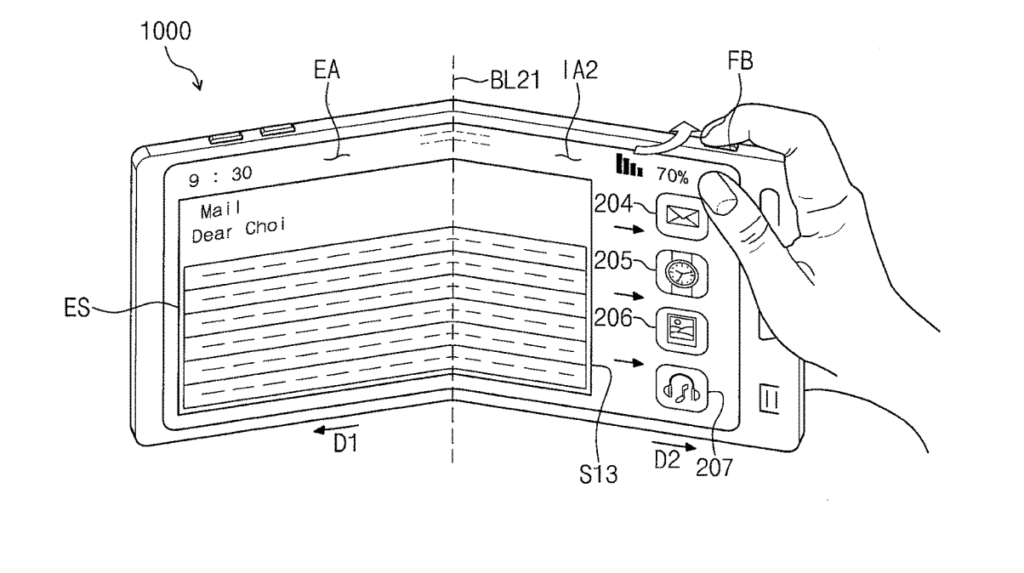
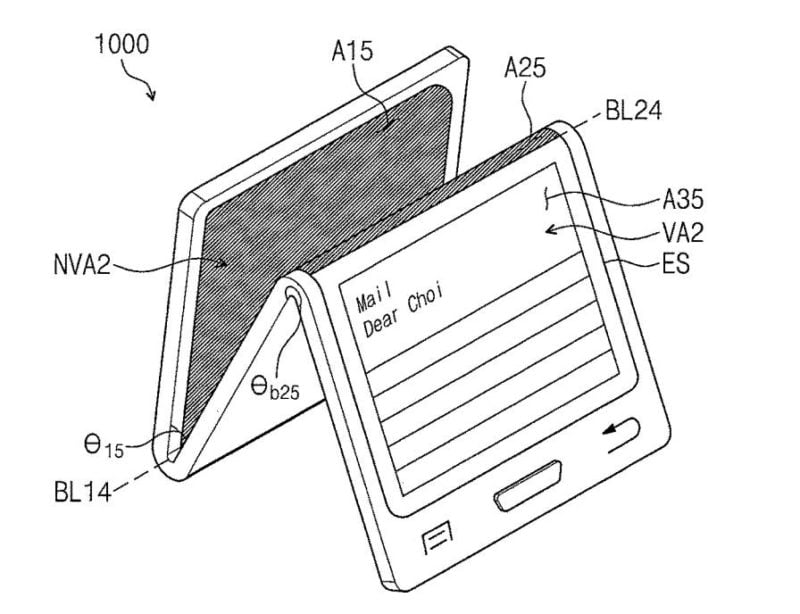
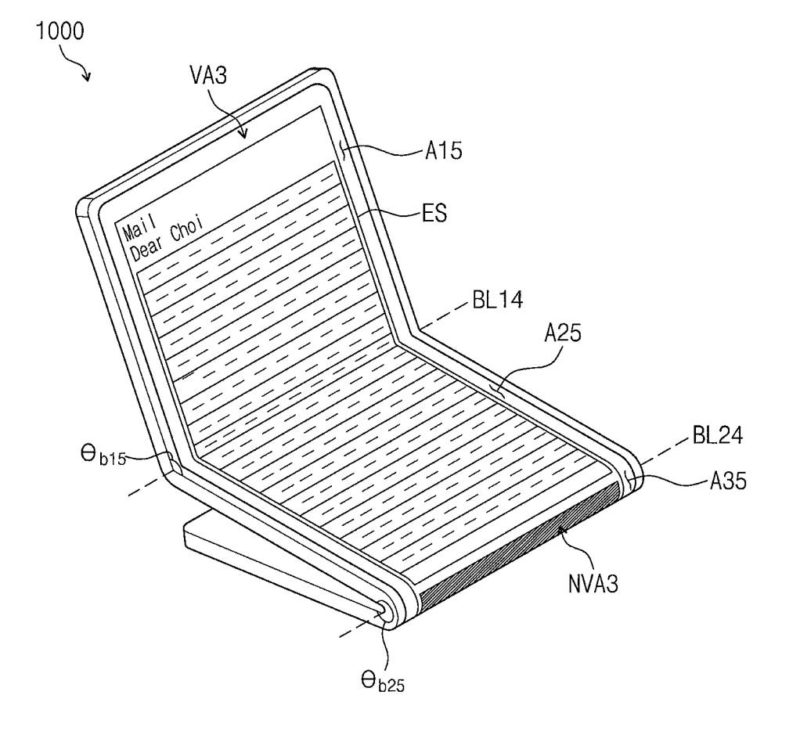
 also allow for the use of AR without employing a camera to incorporate the real world background used in the feature. We’d have to wait for more details on how Samsung plans to deploy the transparent display.
also allow for the use of AR without employing a camera to incorporate the real world background used in the feature. We’d have to wait for more details on how Samsung plans to deploy the transparent display.